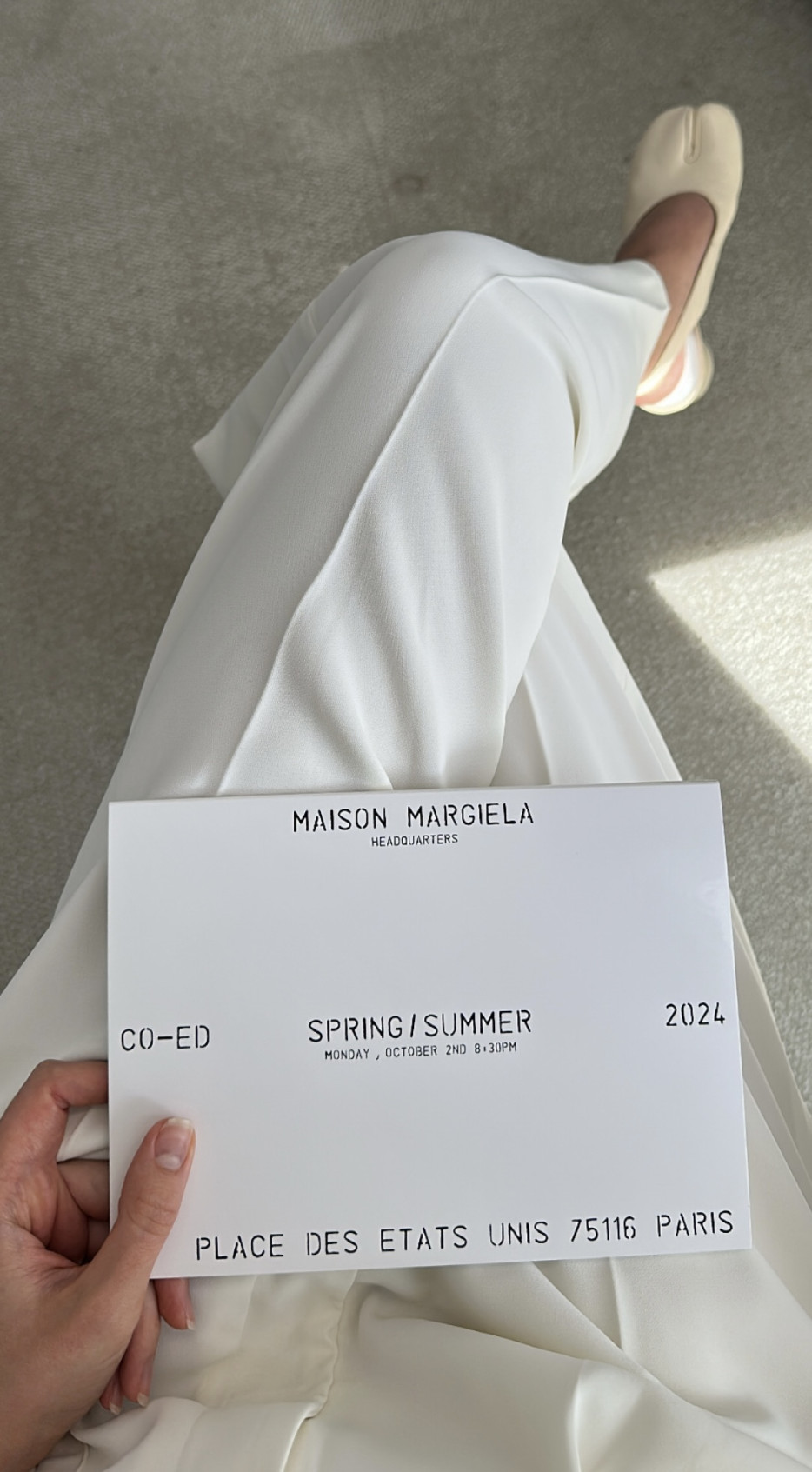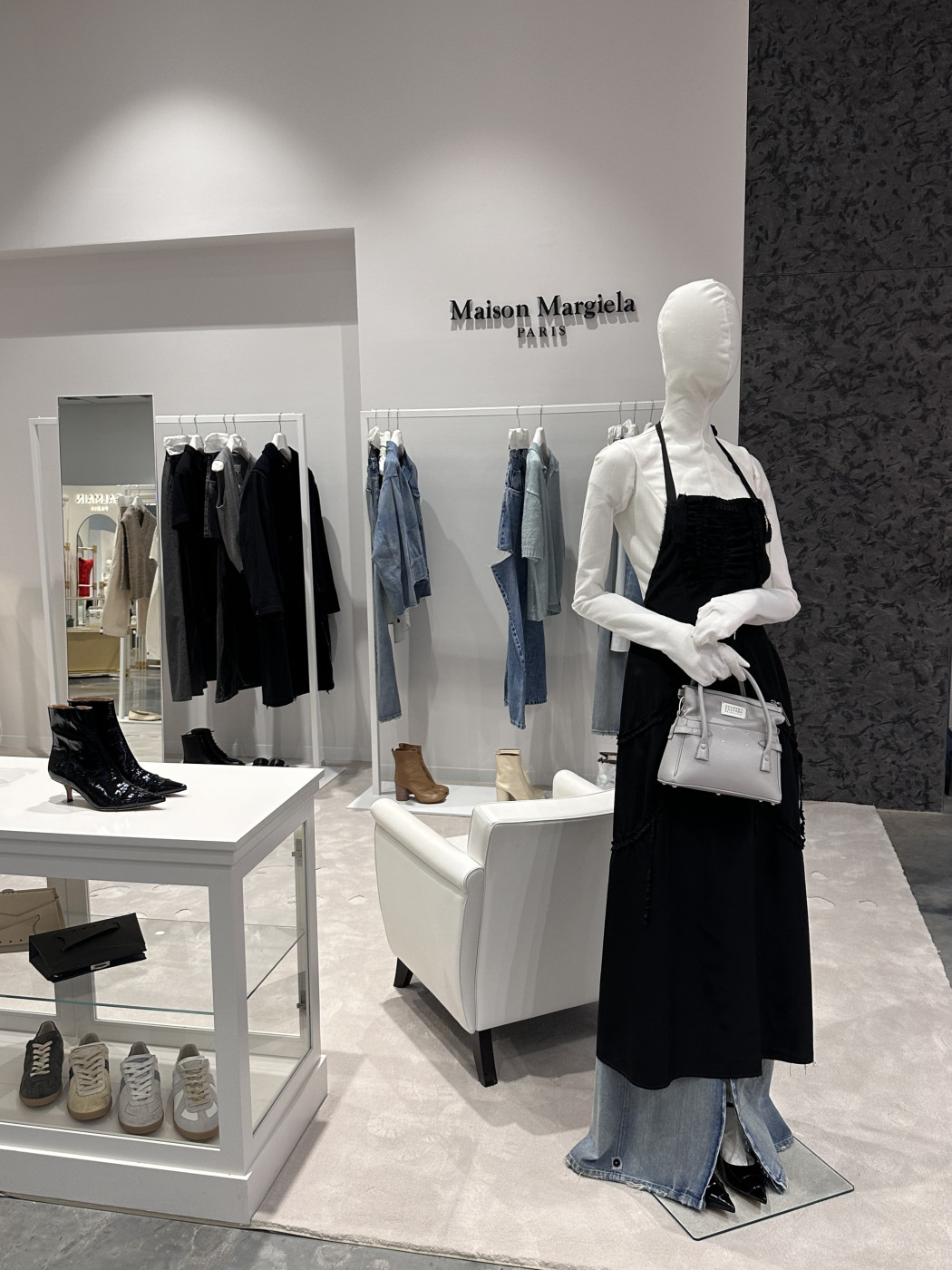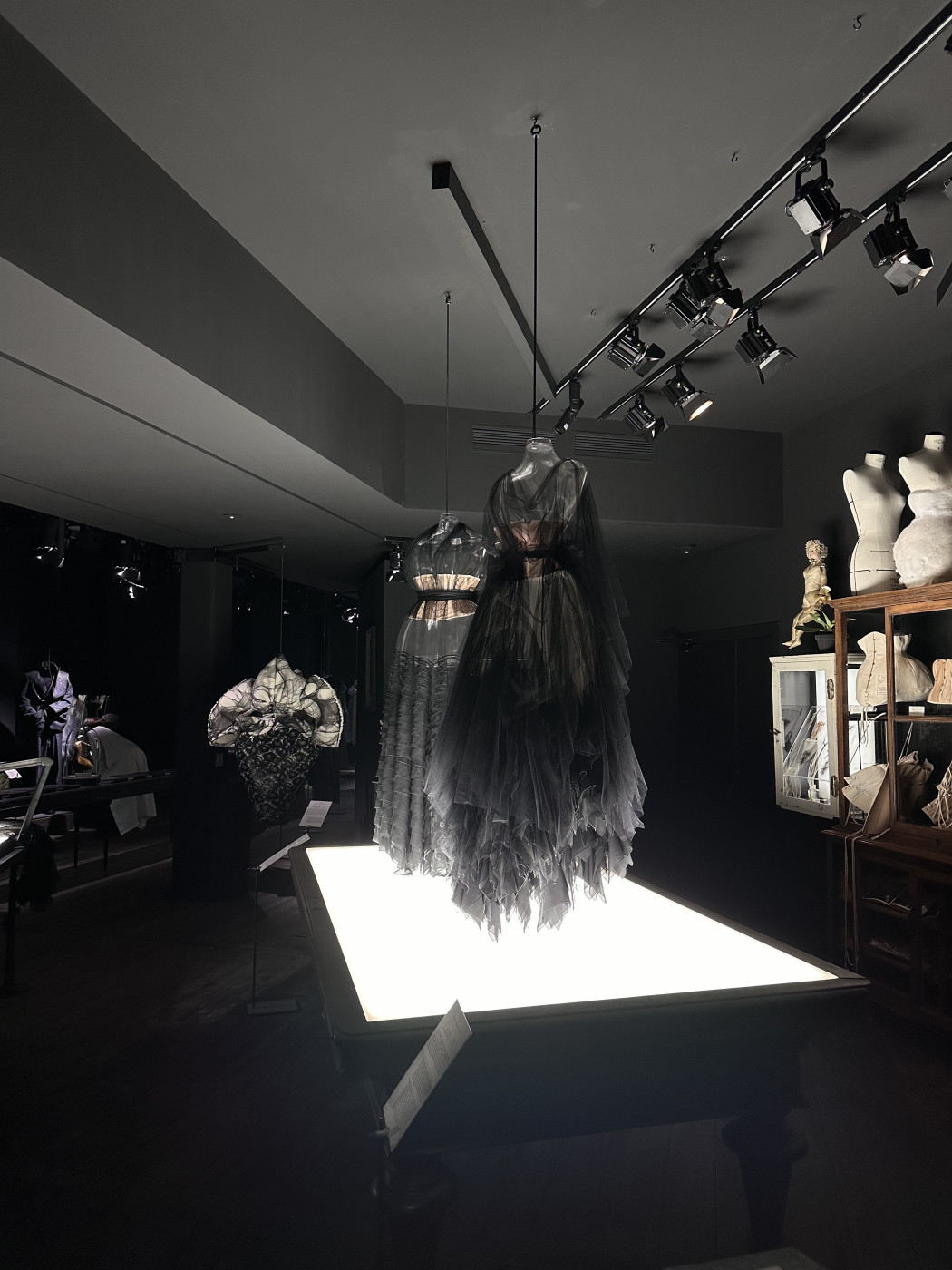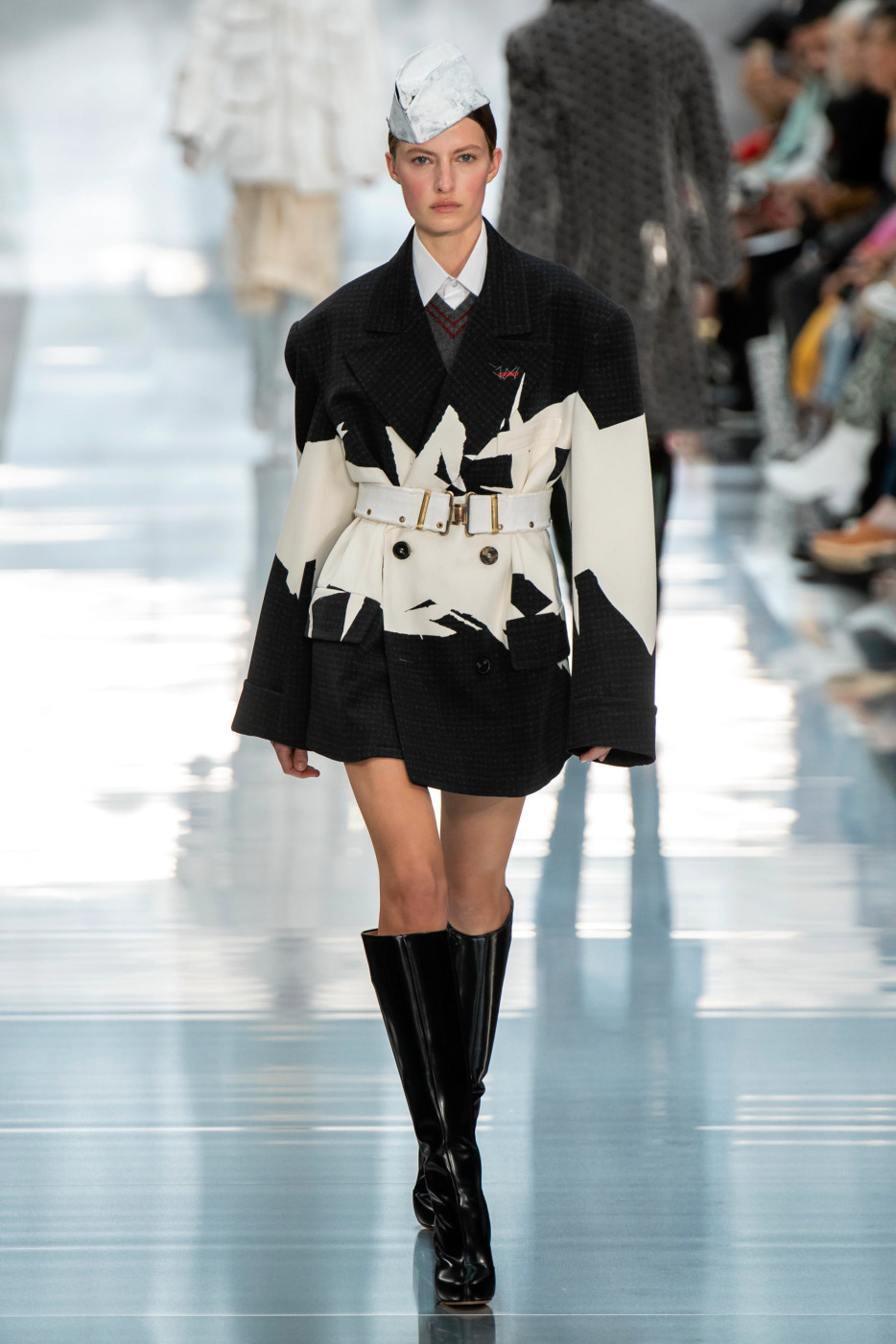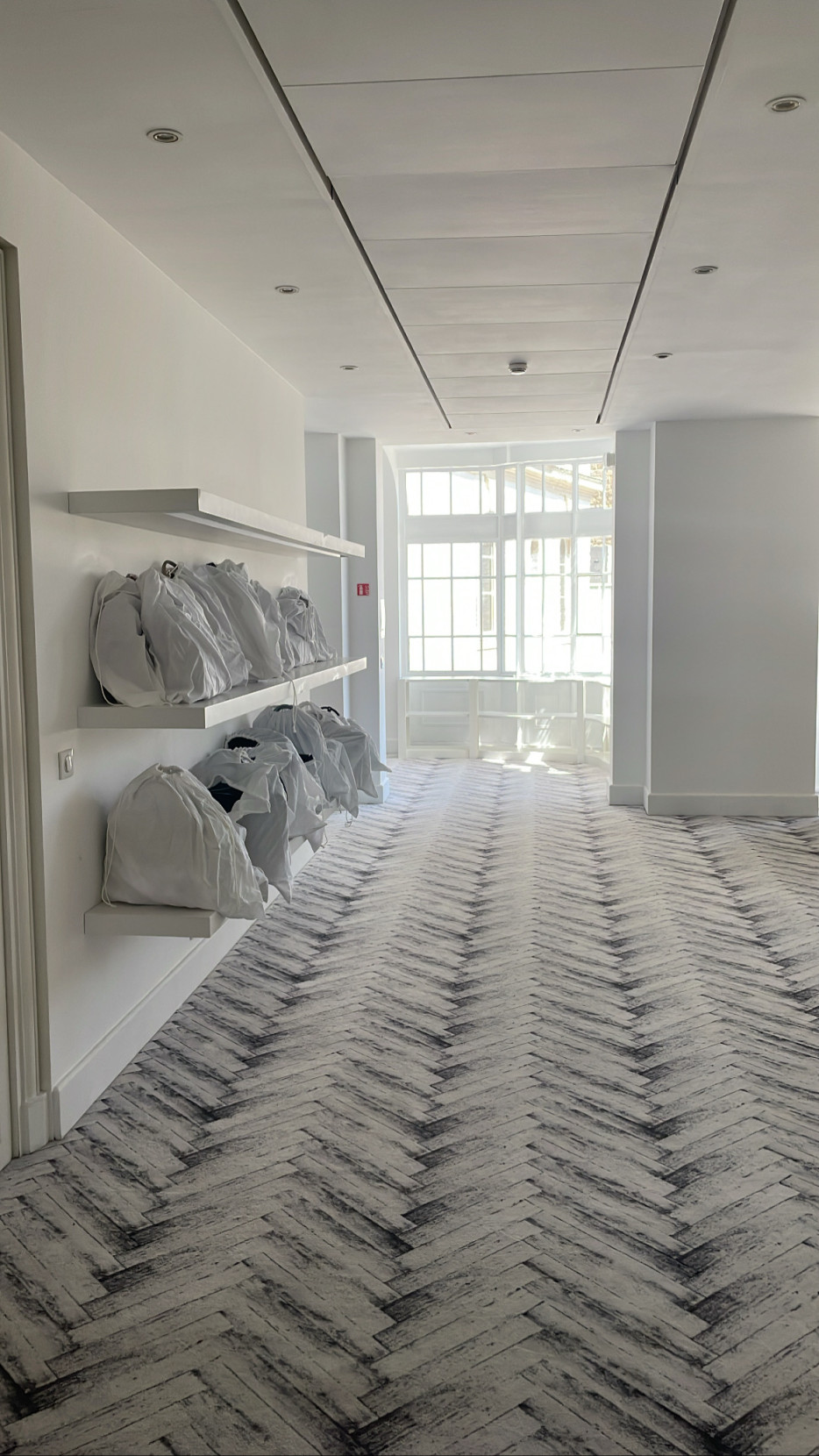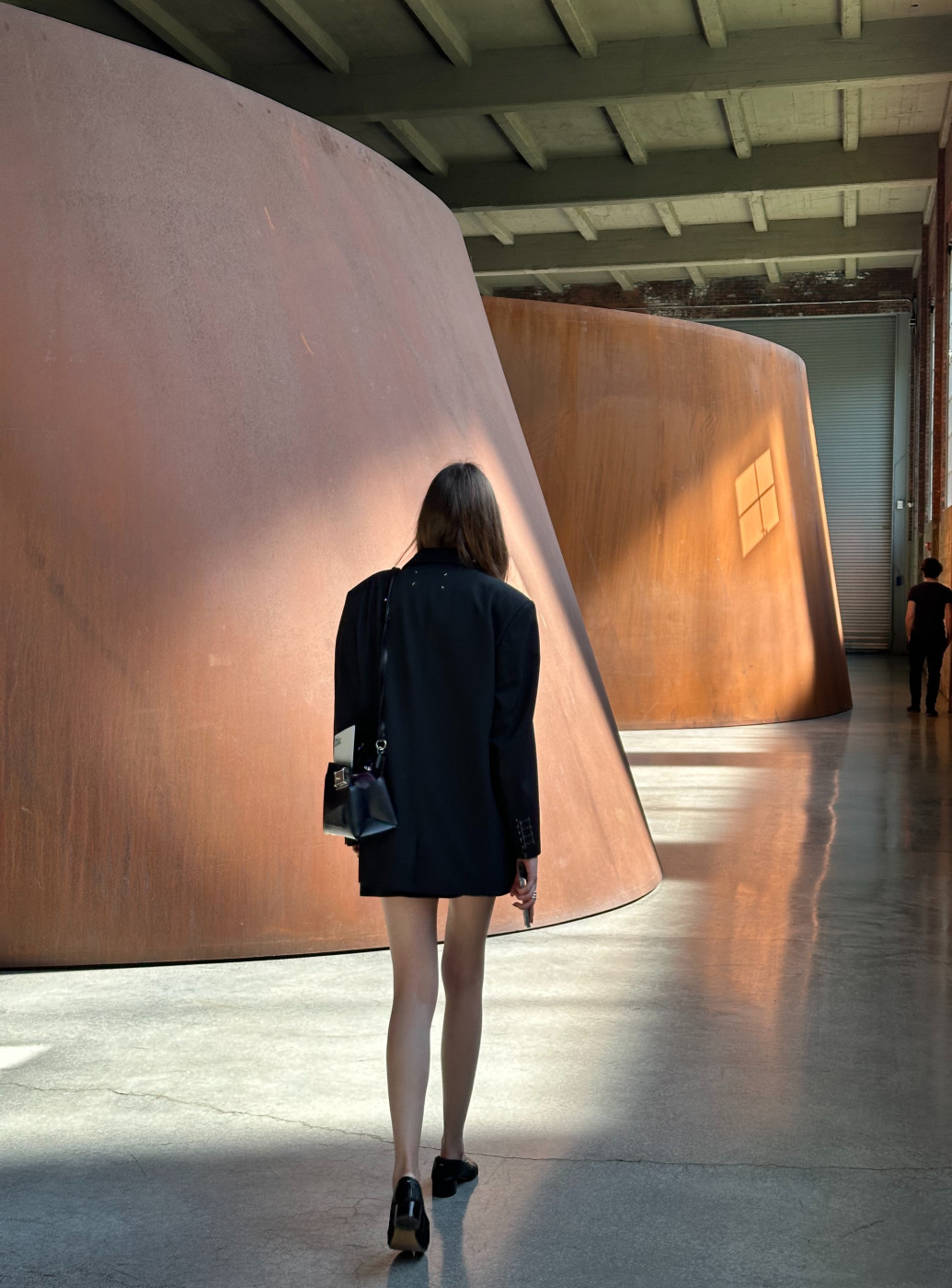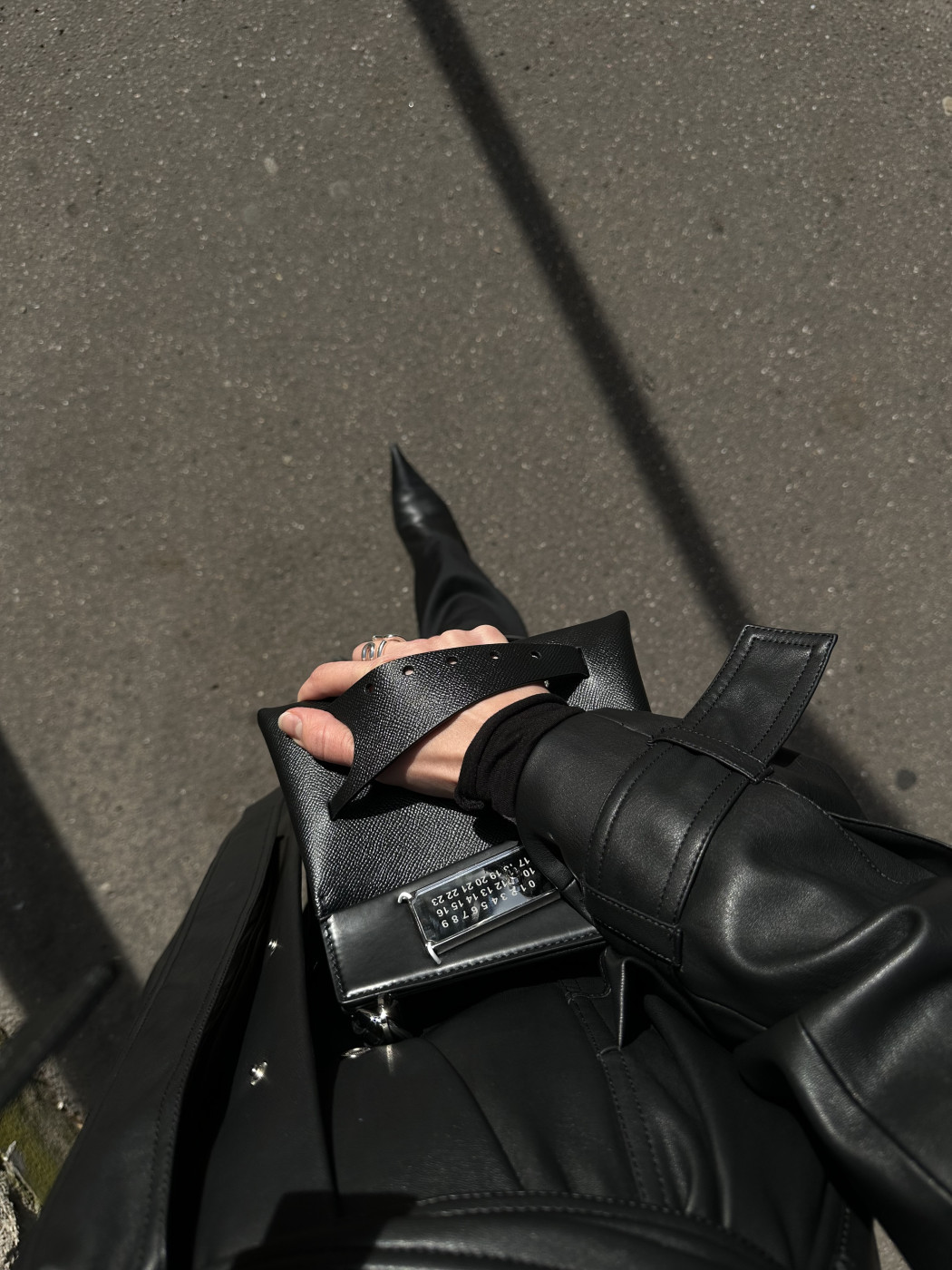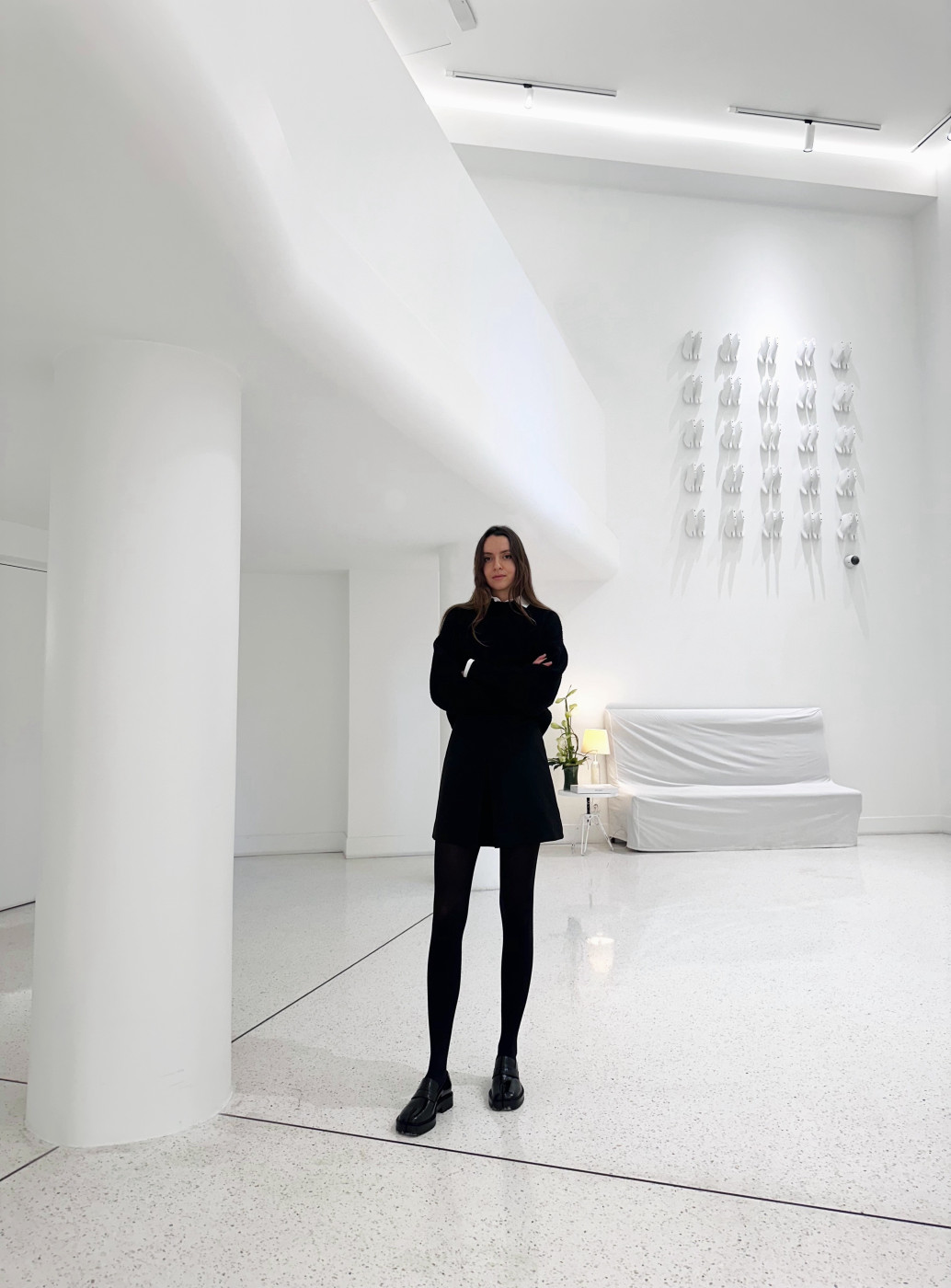
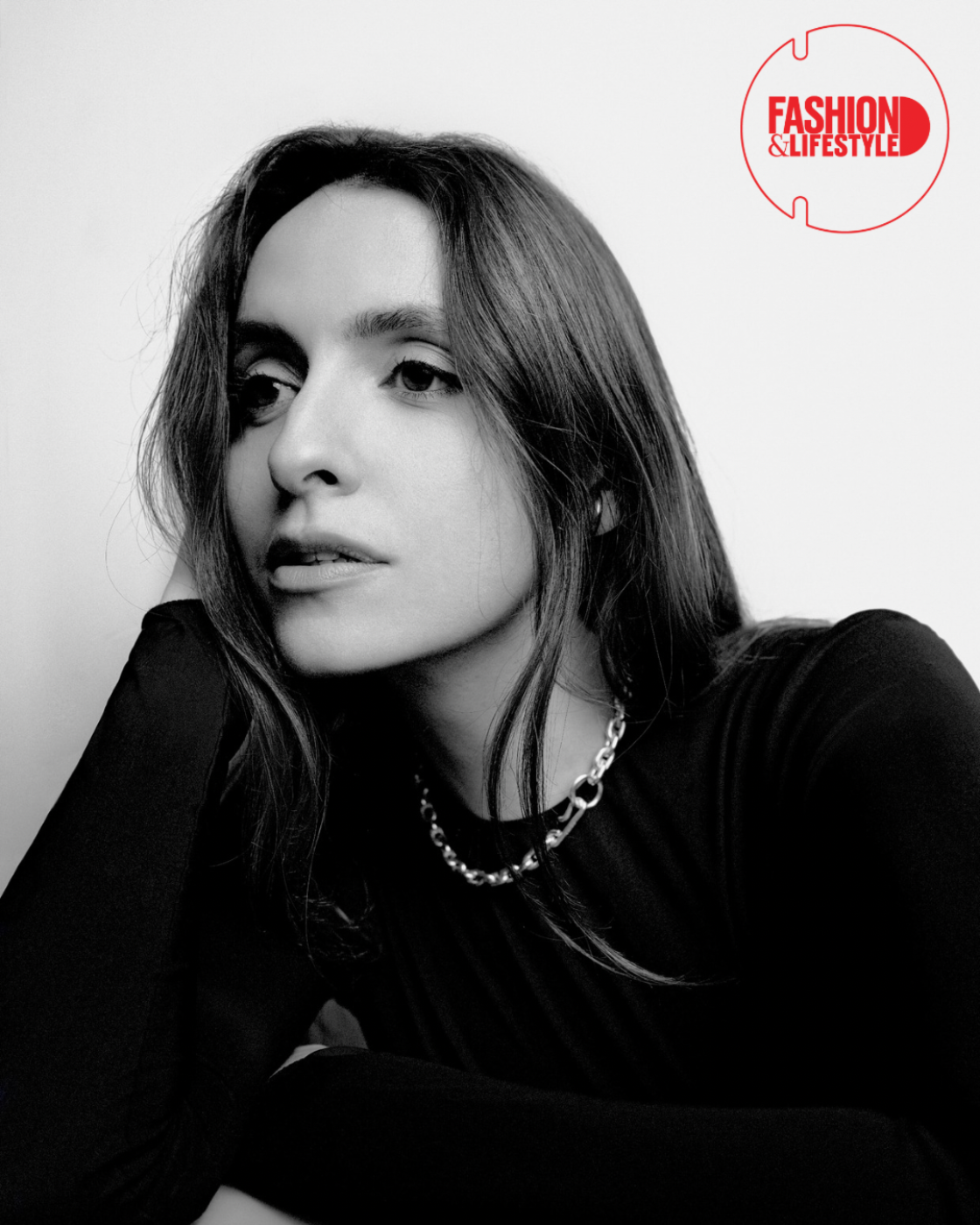
Exclusive: Elena Shcherban: The Margiela Muse Who Is Shaping Fashion from Within
In the bustling streets of Paris, Elena Shcherban is a striking figure, always clad head-to-toe in Margiela, her presence an embodiment of the house’s avant-garde spirit. While many might mistake her for a model, the Ukrainian-born fashion insider is, in fact, the driving force behind Margiela’s international sales strategy. As an area manager at the iconic fashion house, Elena offers an insider’s view of the industry, revealing how she conquered the world of high fashion and why she believes avant-garde brands are thriving, even in times of crisis. In an exclusive interview with HD Fashion, Elena opens up about her journey, her expertise, and her unwavering passion for the transformative power of fashion.
Let’s start from the beginning. Why did you choose Paris, and what were your first jobs in fashion?
By that time, I had already spent five years in fashion. I began as the brand manager for the Ukrainian label POUSTOVIT, and later transitioned into international brand development and operations. Over the years, we grew the brand into a leading name in the local scene, but eventually, I felt I had taken it as far as I could. I wanted a new challenge — something more global. With a background in finance, I saw it as the perfect time to pursue an MBA focused on luxury brand management. I had two options: Milan or Paris. Since I already spoke French, having studied it alongside international relations at university, Paris was the natural choice. I enrolled at Sup de Luxe and simultaneously began looking for opportunities — and that’s when I joined Mugler.
At the time, Mugler was entering a new era under Casey Cadwallader, who had just been appointed creative director. The fashion side of Mugler was struggling: it was sold in just 30 boutiques worldwide, with no flagship and almost no direct retail. I was hired to manage international distribution, in what felt like a startup environment. Their main revenue came from fragrance licenses — first with Clarins, later with L’Oréal — and fashion was more about brand image. The workload was intense: besides distribution, I handled collection merchandising, pricing, sales structuring — everything. In just 18 months, with a team of three — the commercial director, myself, and an assistant — we expanded Mugler’s retail presence to 200 points of sale worldwide. But since there were no plans to expand the team, I decided it was time to move on. I spent the next six months consulting for Ukrainian brands like Frolov and Marianna Senchina — and that’s when Maison Margiela came into the picture.
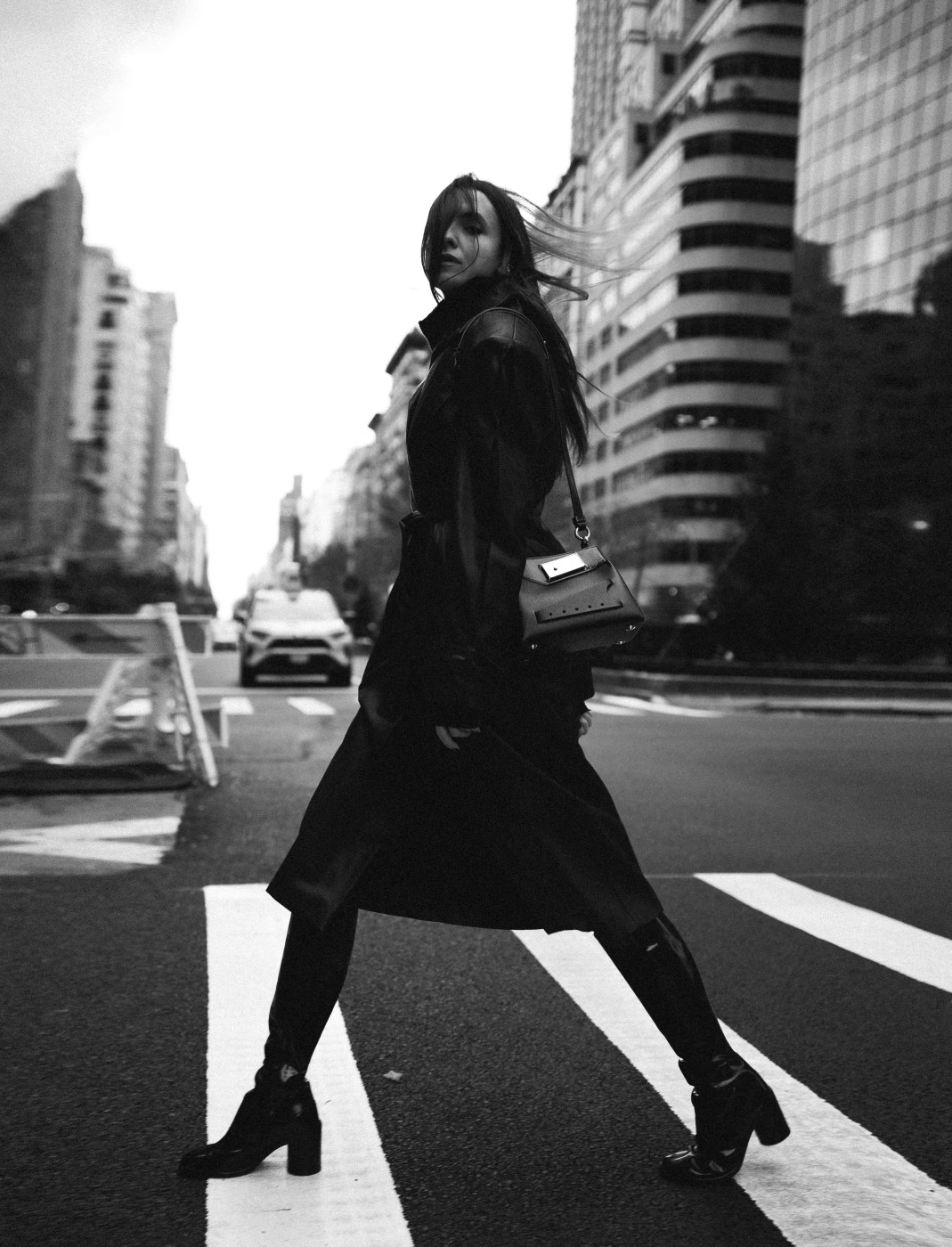
Did you apply for the job, or were you headhunted? And could you give us an overview of what you do at Maison Margiela?
I actually applied for the position. They were looking for a sales manager for Eastern Europe, and honestly, I probably know every client in that region — from small boutiques deep in the Taiga to major retailers. It’s a very specific market, made up of diverse countries, each with its own way of doing business. Some clients are very professional — business is business, and communication is formal, just like in Europe or the U.S. But with others, you have to build a personal relationship, almost like old friends. You need to understand what’s happening in their family, their mood, and, importantly, avoid contacting them at the wrong time. For instance, if a buyer mentions their dog is sick, you can’t push for an unpaid deposit right away. You need to wait, or else they’ll think you’re heartless.
Maison Margiela already had a strong presence in the region before I joined, as one of the first luxury brands in the post-Soviet market. By the time I came on board, the brand was well-established with a large team. This spring will mark four years since with the brand. Today, in addition to Eastern Europe, I oversee Latin America, Africa, the Middle East, Southern Europe (except Italy, which has a unique market), India, and Oceania. It’s a substantial scope, and on top of that, I manage our franchise and travel retail businesses.
So, to work in the Middle East, you need to open franchises?
Yes, it’s quite complicated to manage otherwise. That’s why almost every brand, with the possible exception of Kering brands, operates through franchises in the region. There are a few major groups, like Al Shaya, Al Tayer, and Chalhoub. Chalhoub is probably the largest; they’re behind most of the luxury boutiques in the area. We’ve worked with them to open our boutiques in Dubai and Kuwait. The Middle East market is incredibly interesting, and I’m currently diving into India. What does luxury mean there? Locals explain it through two “religions” — cricket and Bollywood. If a Bollywood star or a top athlete endorses your brand, you’re practically guaranteed success.
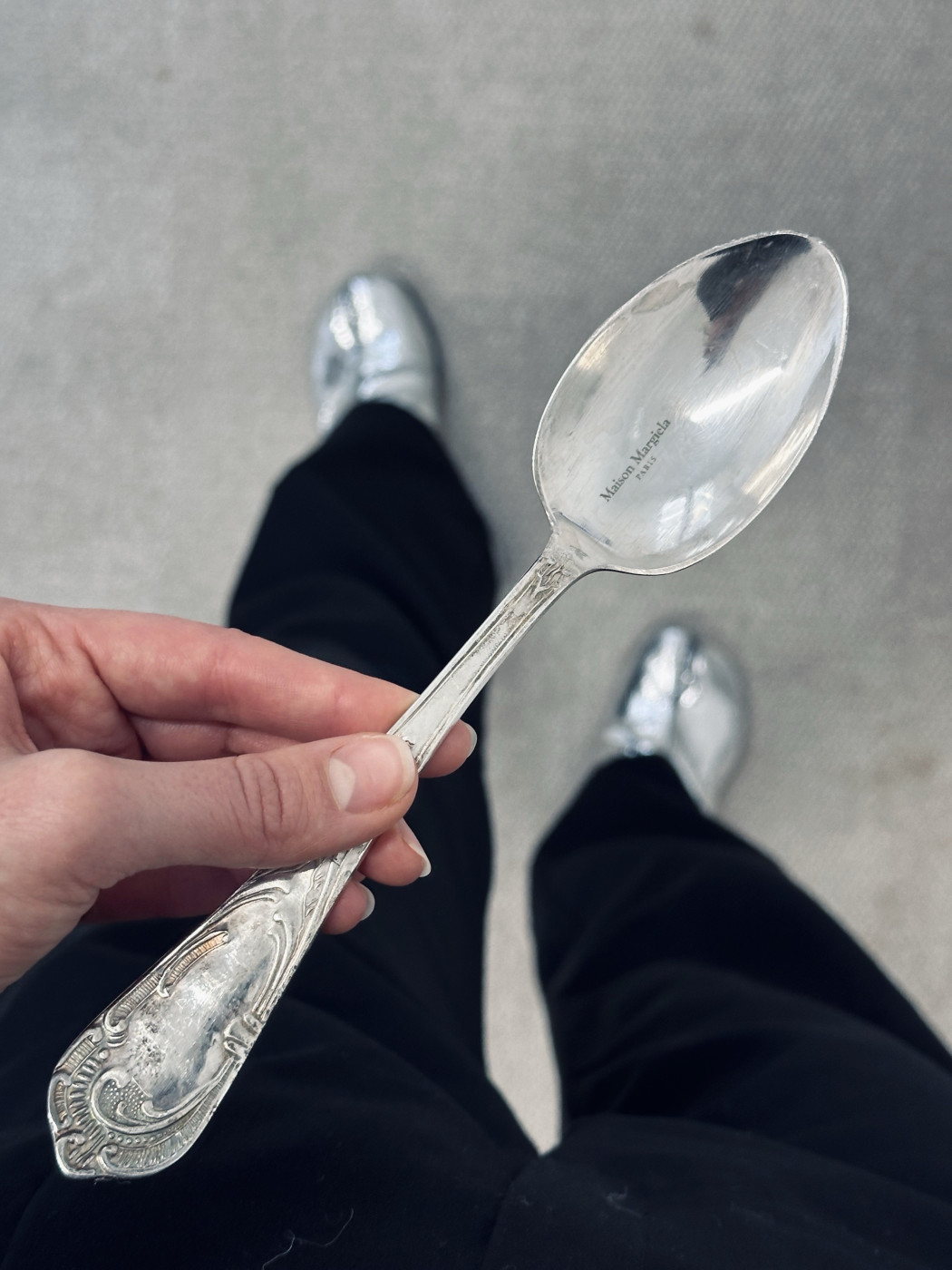
Do you travel to new markets yourself?
Yes, absolutely. When you’re opening a boutique, it’s essential to visit the location, meet with the retailer, and see what other brands are doing. I usually travel between the fashion weeks. Last spring, I went on a large Middle East tour — to Kuwait, Bahrain, Qatar, Abu Dhabi, and Dubai. Right now, I’m headed to Greece and Turkey. For example, in Turkey, we’re opening a pop-up, and I’ll be there for the first few days to oversee the setup and train the staff. It’s essential to stay hands-on: you need to see where your brand is placed, which other brands are nearby, how the collections are displayed — all those details have an impact on sales.
When I visit, I also run training sessions — I sit down with our sales teams, walk them through the pieces, and dive into the storytelling behind the collection. The sessions usually start at 9 AM, so yes, some may still be waking up, but most are wide-eyed and super engaged. It’s fascinating to see the change in energy. A couple of weeks after the session, I get the sales reports, and there’s a clear shift. The pieces I focused on — particularly Margiela’s signature reversible and transformable designs — start to move. Some pieces that were sitting untouched for months suddenly sell out. For instance, when I show the team that a single jacket can be styled in five different ways, it clicks. Customers get it, too. It’s all about showing the magic behind the garments.
Are you responsible for how Margiela is displayed at each point of sale?
Buyers place their orders during Fashion Week, and six months later, the collections arrive in stores. While buyers know their local markets best, I sometimes check in with our buying team to suggest ways to enhance the presentation. For instance, in department stores, we’ll ask the team on the shoe floor to add a couple of our bags next to the sneakers. This simple change creates a more cohesive brand experience, drawing the customer in. A shopper might come in for Replica sneakers, but spot a bag styled nearby and end up buying both. The same approach works with clothing — styling boots under a rack of jeans can encourage customers to buy an entire look. It’s all about thoughtful product placement to increase the average basket size.
How will the trade war imposed by Trump impact the business? How important are U.S. sales for your group?
For now, everything remains stable, but there’s concern about a significant price hike, with reports suggesting increases of up to 50%. I heard from my friends at Celine that they’re seeing huge sell-outs in stores — people are coming in and buying everything because they’re afraid of price increases. More broadly, by late 2024 and early 2025, there were really only two markets still showing growth globally: the U.S. and the Middle East. In contrast, Asia has seen a decline, and Europe remains stagnant. The U.S. market, however, continues to grow steadily, especially in footwear and handbags, which are major drivers due to the strong demand for accessories.
Today, the market is global — you can order online or ask someone to bring something for you, right?
Exactly! Or even fly to Paris with your loved one for a shopping trip. For Americans, Mexico is nearby, so they can hop on a quick flight. But Mexico also has heavy import taxes. Take Brazil, for example — it’s one of my markets. With customs duties and all the extra fees, prices literally double what they are in Europe. If something costs €100 in Europe, in Brazil it will be €200. So naturally, people don’t buy on impulse. It’s not about the “I want it, I’ll get it now” shopper. Instead, they save up, plan ahead, and buy luxury goods when they travel, like on a trip to Paris.
Just like it used to be in Eastern Europe, people would wait for a trip abroad to buy their favourite brand cheaper and with tax-free benefits.
Exactly. That’s actually how TSUM in Moscow built their success. They fought hard to offer Milan-level pricing, negotiating directly with brands using their large budgets. They changed the game. Before that, no one was interested in adjusting prices — luxury shopping was only for the very wealthy. TSUM proved there was a much bigger audience if you made luxury a little more accessible.
What about Dubai?
Dubai is a very unique market. About 70% of buyers are expats, and around half of those are from Eastern Europe. I was recently speaking to a boutique manager who said that 60–70% of their customers are Russian, Ukrainian, and Kazakh. Price differences compared to Paris aren’t that huge — around a 10% markup. You only really feel it if you’re buying something major, like a very expensive bag. But for something like a €700 pair of jeans, you barely notice the difference.
How about the product mix?
Since they cater mostly to expats, the buys are very similar to Europe — maybe slightly dressier. One of the top-selling brands there is Amina Muaddi, alongside Christian Louboutin — people love the sparkle, the glamour. But once you move to Kuwait, it’s a different story — there, it’s mostly local clients. Interestingly, Kuwait is considered the fashion capital of the Gulf. You can see it on the streets — Kuwaitis are dressed with real individuality, they are true trendsetters. Dubai, in contrast, is more of a tourist shopping hub; it’s about fast, practical purchases: a pair of jeans, a T-shirt, sneakers. After Kuwait, you have Saudi Arabia, Qatar, and Bahrain, where the market is much more conservative. People love luxury brands, but they don’t experiment much with fashion. Trends usually start in Kuwait and take a few years to spread to the rest of the region. That said, none of these markets is particularly price sensitive. If a client walks into the boutique and falls in love with a dress, they’ll buy it without hesitation. I recently saw some incredible, ultra-expensive gowns sell in Kuwait — we had maybe one or two pieces on the floor, and they moved quickly.
Can clients pre-order from couture shows?
Couture with John (Galliano) was once a year — a celebration for all fashion lovers. Some dresses featured in those shows took 45 consecutive days of work at our Paris atelier to complete, all by hand. There were flowers, lace, and intricate hand-stitching. Of course, you can’t make them for everyone — it’s a lengthy process. Our Paris atelier isn’t that large. But these pieces are available to our VICs (Very Important Clients), and you’ll often see them on red carpets. Right now, we’re awaiting the first couture collection from Glenn Martens. It’s still TBС, but he will likely start with the summer couture. If not, we’re already confirmed for a regular show in October. I see Glenn in the Paris office almost every day now.
Margiela is an avant-garde house. Is the couture collection more important for you in terms of brand image?
The structure of our collection is like a pyramid. At the top, you have Artisanal, our couture collection, which sets the main theme and techniques. Then, it slightly simplifies. Our second story is the co-opted collection, which we present on the catwalk. So, this theme becomes more accessible, and the techniques become those that can be produced in a factory, though there’s still a touch of handmade craftsmanship. Then it gets simplified further into the pre-collections, and finally into shoes and accessories, with the core colours or techniques. For example, when John had the fisherman theme, in the couture collection, you had dresses hand-embroidered with fishing gear, and a year later, we had rubber boots in the commercial collection, inspired by the same theme.
Do you miss John?
I often get asked, “How will John’s departure affect the brand?” Our DNA is incredibly strong. Maison Margiela thrived without a creative director for years after Martin left, before John joined in 2014 (even though Matthieu Blazy was the creative director for the Artisanal line, we didn’t communicate that). When you explore our archives, you instantly see how ahead of its time Martin was. When I visited the Martin Margiela exhibition at Palais Galliera in 2018, I remember thinking: “Wow, 80% of what brands are doing now is inspired by him”. So, clearly, the brand will evolve. How much will it affect our key pieces? I don’t think it will have a huge impact. The Tabi boots from 1988 and Replica sneakers from 1998 are still top sellers, and John’s bags have made their mark. However, as John moves on, there’s a part of me that will feel a sense of jealousy, like watching an ex move on. What I’ll truly miss is the couture; the films we created, especially during Covid, were so unique and authentic, they gave me goosebumps.
At the same time, people always said that John was always making his signature Jogn Galliano wherever he worked.
John definitely made it his own, but he also adapted to our unfinished narratives, like the anonymity of the lining. Renzo Rosso knew exactly what he was doing when he brought him in. Despite the economic crises, the entire OTB group, including us, remained strong last year. Renzo is a genius businessman who built Diesel into a global phenomenon. The young love Diesel, because of the shows, Glenn Martens, it’s trendy, it’s cool. And then you stop some guy in Saint-Denis, and he’ll say, “Diesel? That’s jeans”. Everyone knows it.
You are known to be one of the boldest ambassadors of your brand. How important are looks in fashion?
In fashion, first impressions matter, so when I meet clients, I make sure to be head to toe in Margiela. Buyers are people, too, not robots focused only on numbers. Sometimes, they need to see how something works in real life, beyond what they see on the catwalk or on a model in the showroom. For example, a crazy jacket or an unusual blouse may look bold on a model, but I try to show them how it can be paired with something more neutral and work in everyday life. I’ve often had buyers ask about something I wear and say, “Is that from last season?” And I’d show them how it could be an alternative to current trends. I always tell them, “Look, I’m wearing it, and it works!” It’s all about how you mix and match. I’m lucky to have a team that’s extremely stylish. People often say that fashion people only wear black, but my colleagues inspire me every day. Especially those who’ve been with Margiela for 10 years, with an archive of pieces from Martin, Matthieu Blazy, and others. You can see how differently these pieces can be interpreted, fitting different personalities.
Do they wear them, or just carefully preserve them?
They wear them. We have this concept that a piece truly lives only when it’s worn. In fact, Margiela has a concept called “Loved to death”. You wear something so much that it gets worn out, with holes and tears, and that only makes it more meaningful to you. For example, in our current collection, we were inspired by King Charles. We found photos of him wearing the same pair of shoes, from when he first married Camilla, and then photos from three years ago, where he’s wearing them again, with patches added. Our studio recreated those shoes with similar patches, loved to death. Or take the Barbour jacket that Charles wore while hunting with an official delegation. Twenty years later, he’s wearing the same jacket, now in his garden, with his dogs. Over time, it’s worn and patched, but that’s part of its story. The concept is that the piece becomes even more important as time passes.
That’s cool. It’s such a responsible approach to fashion and your wardrobe.
There’s a joke that Martin was actually the pioneer of the upcycling movement. Take the Replica sneakers, for example — they were originally sneakers he found in a vintage shop, and he simply reworked them, let’s say, updated them, and made a more comfortable version of sneakers that were designed in the ’70s for the Austrian army. Or the boots with champagne corks, or jackets made from broken plates?
Why did you choose to work in fashion?
Honestly, I can’t say I dreamt of working in fashion my whole life. I always liked it, though, especially since my mom was a designer. In the Soviet Union, designers were essentially garment constructors. I always loved flipping through fashion magazines, and I dressed a bit differently because my mom would sew or knit things for me. I was intrigued by fashion as an art form. I remember in university, I discovered Margiela, and I told myself I would work for the brand one day. When I saw the job opening, I applied. Now I focus more on the business side, but I still find the brand incredibly interesting. Many brands look up to us. Everyone wants to create art and make money from it. Over four years, I’ve seen how our leather and accessories have transformed — the improvement is night and day.
Did you have accessories before John?
Yes, we did have bags, but our production expertise grew over time. Now, the quality of our bags, like the new one I have, is just incredible. I wear it all the time. The avant-garde spirit remains intact, but now you can find a bag that stands out among the usual black ones with logos when you search for a bag on websites like Net-a-Porter. So, if you want something different but still subtle, now you know that Margiela offers that.
But it’s still recognisable, right?
Exactly. In fashion, you notice the details. For instance, if I see someone walking down the street with four stitches on their jacket, I instantly know it’s Margiela. A passerby might not, but when it’s Dior with big letters, everyone recognises it — and that’s great, too. It’s their choice. But Margiela’s never been about shouting its name.
Bref, the fashion crowd will know, it’s Margiela.
Yes! Like the Replica sneakers — they’re not just any sneakers, they have a story behind them. I recently took my new Tabi to get protection fitted, and the guy at the atelier told me that in his 10 years working there, only once did someone bring in such shoes. In a place like the 16th arrondissement, fashion and trends are perceived a bit differently.
By the way, why did you choose the 16th?
I have an office there, so it’s very practical. I used to live in the 11th, closer to Le Marais, but I spend a lot of time at work, and it’s easier to hop on the metro or walk from there if I need to go to other parts of the city. Plus, I love walking through beautiful boulevards in the morning; it’s a far more pleasant start to the day than taking the metro.
This interview has been condensed and edited for clarity.
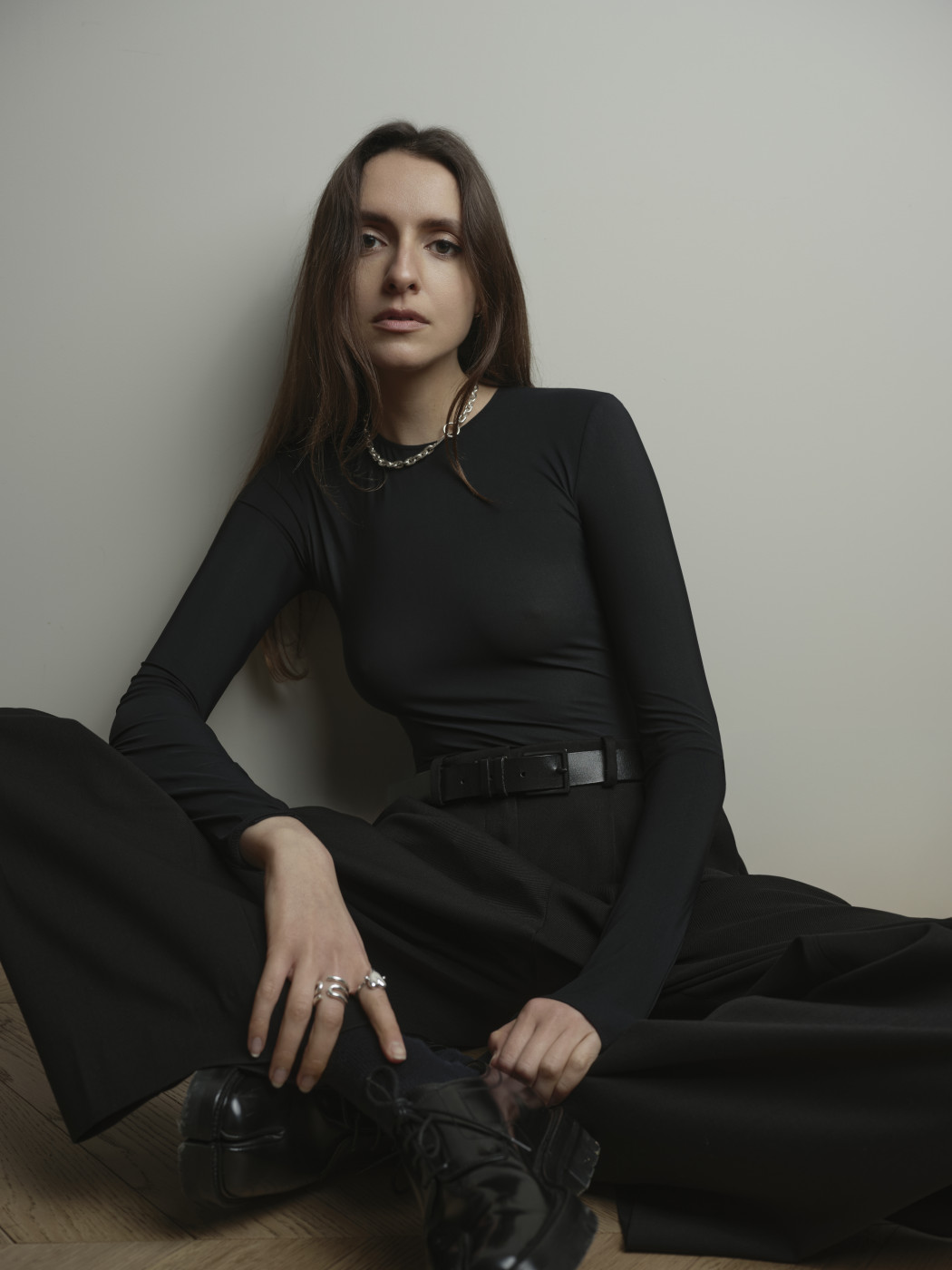
Courtesy of Elena Shcherban
Text: Lidia Ageeva


